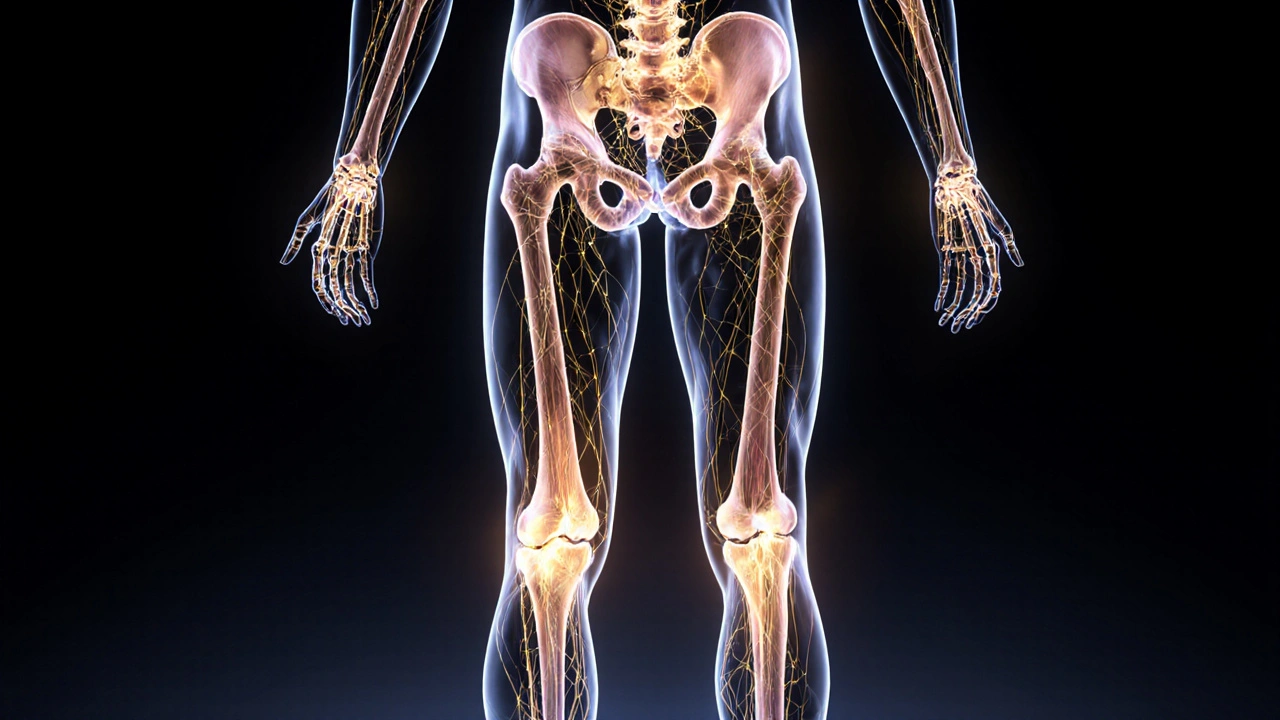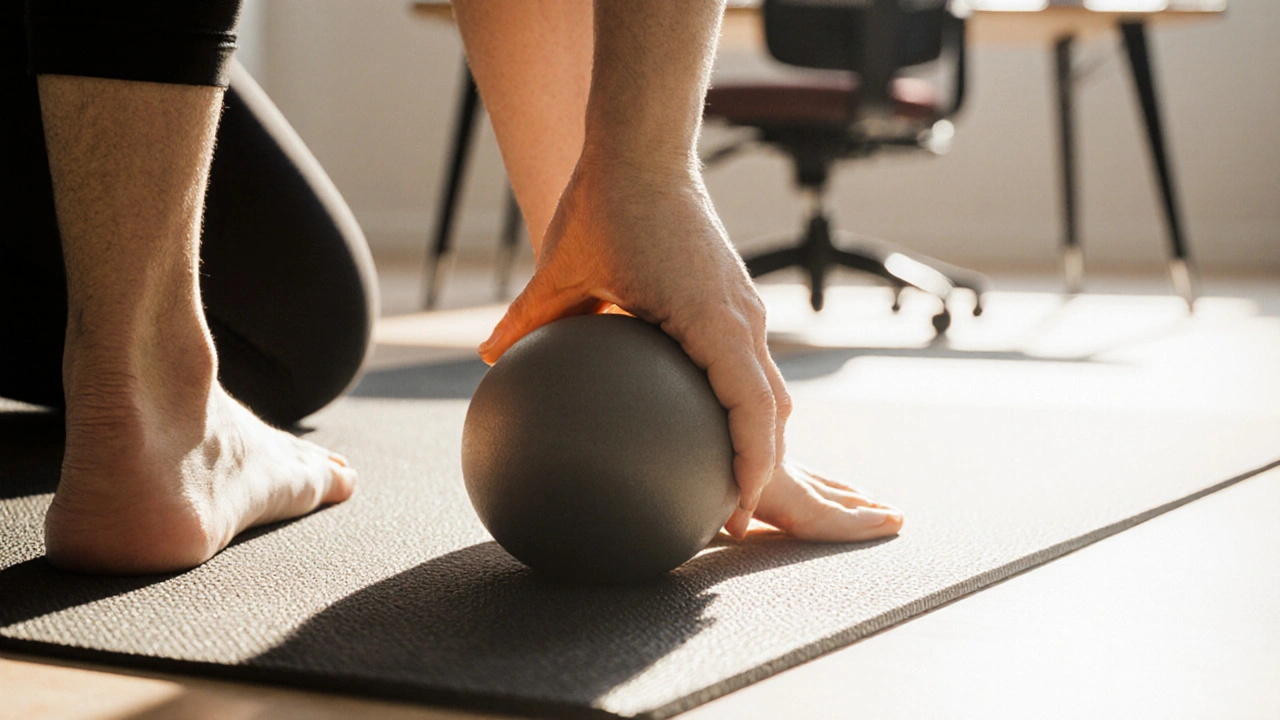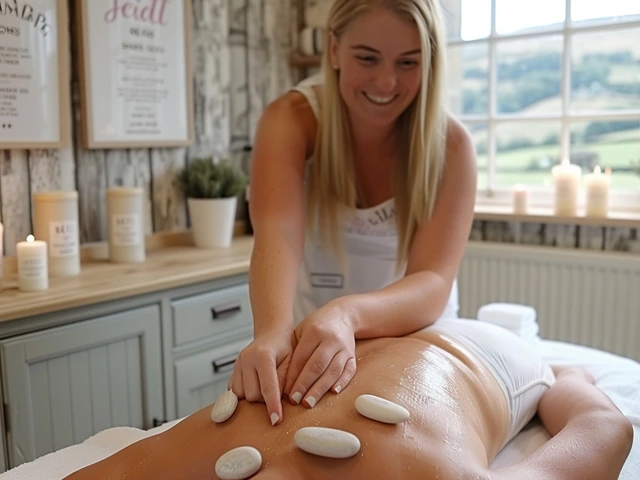Why Myofascial Release Therapy Could Be Your Answer to Chronic Pain

Chronic Pain Assessment Tool
Your Chronic Pain Profile
This assessment helps determine if myofascial release therapy might be the right solution for your pain.
If you’ve been living with chronic pain for months-or years-and nothing seems to stick, you’re not alone. Millions of people grind through daily life with tight shoulders, aching lower backs, or stiff hips that never quite loosen up. Doctors might say it’s "just muscle tension," physical therapy might have given you temporary relief, and painkillers only mask the problem. But what if the real issue isn’t your muscles at all? What if it’s your fascia?
What Exactly Is Myofascial Release Therapy?
Myofascial release therapy isn’t another type of massage. It’s a hands-on technique that targets the fascia-the thin, web-like connective tissue that wraps around every muscle, bone, nerve, and organ in your body. Think of it like shrink-wrap holding your body together. When you get injured, stressed, or sit too long, this tissue can tighten, dry out, and stick to itself. That’s when pain spreads, movement gets restricted, and your body starts to compensate in ways that create more pain.
Unlike deep tissue massage, which pushes hard into muscles, myofascial release uses gentle, sustained pressure-often holding for 90 seconds to five minutes-to encourage the fascia to release its grip. It’s not about breaking anything apart. It’s about helping your body remember how to relax.
Studies from the Journal of Bodywork and Movement Therapies show that people with chronic lower back pain who received weekly myofascial release sessions for eight weeks reported a 40% reduction in pain intensity. Those numbers aren’t fluke. They’re repeatable. And the effects often last longer than steroid injections or NSAIDs.
Why Your Muscles Aren’t the Real Problem
Most people think pain comes from tight muscles. But here’s the twist: tight muscles are often just the symptom, not the cause. When fascia gets stuck, it pulls on muscles, tendons, and even joints. That’s why you might feel pain in your knee, but the real problem is a tight band of fascia running from your hip down to your calf.
Take plantar fasciitis. You think it’s your foot. It’s not. It’s your entire posterior fascial line-from your scalp to your toes-that’s become restricted. Same with tension headaches. They’re rarely just from stress. More often, it’s fascia in your neck and upper back that’s pulled tight from years of slouching at a desk.
Myofascial release doesn’t just treat the spot where it hurts. It treats the whole system. That’s why you might feel relief in your shoulder after a therapist works on your hip. It’s not magic. It’s anatomy.
Who Benefits the Most?
This therapy isn’t a cure-all, but it’s incredibly effective for specific groups:
- People with myofascial pain syndrome-trigger points that radiate pain, often misdiagnosed as arthritis or nerve issues
- Those recovering from surgery or injury, especially if scar tissue formed
- Office workers with chronic neck and upper back pain from sitting
- Runners and athletes with recurring tightness that doesn’t respond to stretching
- People with fibromyalgia who’ve tried everything else
In Melbourne, physiotherapists specializing in myofascial release report a 70% success rate with clients who’ve tried massage, chiropractic, and acupuncture without lasting results. The key? Consistency. One session won’t undo years of tension. But six to eight sessions, spaced weekly, can reset your body’s pain response.
What to Expect in a Session
There’s no cracking, no aggressive pushing. A trained therapist will use their hands-sometimes elbows or forearms-to apply slow, steady pressure to tight areas. You might feel a mild burning, a deep ache, or even a sense of warmth spreading through the tissue. That’s normal. It’s your fascia letting go.
Some people feel immediate relief. Others feel sore afterward, like after a tough workout. That’s because your nervous system is relearning how to move without pain. The therapist might ask you to breathe deeply or move gently during the session. That’s not just to help you relax-it’s to help your brain reconnect with the area being treated.
Most sessions last 45 to 75 minutes. You’ll be fully clothed, usually in shorts and a tank top. No oil, no music blasting, no distractions. Just quiet, focused work.

Can You Do It Yourself?
Yes-and you should. Professional sessions are powerful, but daily self-care keeps the progress going.
Tools like foam rollers, lacrosse balls, or even a frozen water bottle work well. Roll slowly over tight spots-no bouncing. Hold pressure on the most tender area for at least 90 seconds. If it hurts too much, ease off. You’re not trying to kill the pain. You’re trying to talk to your body.
Try this: If your lower back aches, lie on your back with a lacrosse ball under your glutes. Slowly shift your weight until you find the spot that feels like a knot. Breathe. Stay still. After 2 minutes, you’ll feel the tension melt. Do this daily for a week, and you’ll notice your posture change.
Just don’t roll over bones, joints, or your spine. And if you have osteoporosis, recent surgery, or open wounds, skip self-massage and see a professional.
How It Compares to Other Therapies
| Therapy | Targets | Duration of Relief | Frequency Needed | Side Effects |
|---|---|---|---|---|
| Myofascial Release | Fascia and connective tissue | Weeks to months | Weekly (then monthly) | Mild soreness |
| Deep Tissue Massage | Muscle fibers | Hours to days | Weekly | Bruising, soreness |
| Chiropractic Adjustment | Joints and spine | Days to weeks | Biweekly | Temporary dizziness, stiffness |
| Physical Therapy (Exercise) | Muscle strength and mobility | Months | Daily exercises | Overuse injury if done wrong |
| Pain Medications | Nerve signals | Hours | Daily | Gut issues, dependency |
Myofascial release stands out because it doesn’t just mask pain. It fixes the root-literally. It’s the only therapy that directly addresses the connective tissue that’s been overlooked for decades.
When It Won’t Work
Myofascial release isn’t magic. It won’t fix a herniated disc, a torn ligament, or a nerve compression from spinal stenosis. If your pain comes from structural damage, you’ll need imaging, possibly surgery, or other medical intervention.
Also, if you’re not willing to move after treatment-stretching, walking, changing posture-it won’t stick. Fascia re-tightens fast if you go back to sitting 10 hours a day. This therapy works best when paired with small, daily habits: standing up every 30 minutes, sleeping on your back, avoiding crossed legs.

How to Find a Good Practitioner
Not every massage therapist knows how to do myofascial release properly. Look for someone with certifications in:
- John Barnes Myofascial Release Approach
- Advanced Myofascial Release Therapy (AMRT)
- Manual Therapy Certification from a physiotherapy school
Ask if they’ve treated people with chronic pain before. A good practitioner will spend time asking about your history, not just diving in. They should explain what they’re doing and why. If they’re using a machine or just pressing hard, walk away.
In Melbourne, clinics like Bodywork Studio and Connect Physio specialize in this technique. Most offer a free 15-minute consultation to see if you’re a good fit.
Real Results, Real Stories
One client, a 52-year-old teacher from Brighton, had sciatica for six years. She’d tried injections, yoga, and chiropractic. Nothing worked. After six myofascial sessions focused on her hip and lower back fascia, she walked without pain for the first time in over half a decade. She now walks 5 kilometers every morning.
Another, a 28-year-old graphic designer with daily migraines, found her headaches vanished after releasing fascia in her neck and jaw. Turns out, her tight temporalis muscle was pulling on the dura mater-the tough membrane around her brain. That’s a connection most doctors don’t even know exists.
These aren’t outliers. They’re common outcomes when the right technique meets the right patient.
Is It Worth It?
If you’ve spent thousands on treatments that didn’t last, and you’re tired of masking pain with pills, myofascial release therapy might be the answer you’ve been looking for. It’s not quick. It’s not flashy. But it’s one of the few therapies that actually rewires how your body holds tension.
Start with a professional session. Then, add daily self-care. Give it six weeks. If your pain hasn’t shifted-even a little-you’ve lost nothing but time. But if it does? You might just get your life back.
Is myofascial release therapy the same as foam rolling?
Foam rolling is a form of self-myofascial release, but it’s not the same as professional therapy. A trained therapist can detect subtle restrictions you can’t feel, apply precise pressure for longer durations, and work on areas your body won’t let you reach. Think of foam rolling as maintenance and professional sessions as a deep reset.
How many sessions do I need to see results?
Most people notice a difference after 3 to 5 sessions. For chronic pain lasting years, 8 to 12 sessions spread over 2 to 3 months is typical. After that, monthly maintenance helps keep things from tightening up again.
Does myofascial release therapy hurt?
It shouldn’t be unbearable. You’ll feel pressure and maybe a deep ache, but it should never feel sharp or like you’re being torn apart. The "good pain" is the kind that makes you breathe deeper and relax into it. If it hurts too much, tell your therapist. They’ll adjust.
Can I do this if I have arthritis?
Yes-especially if you have osteoarthritis. Myofascial release doesn’t affect joints directly, but it can reduce the tension pulling on them. Many people with knee or hip arthritis find they move easier and have less pain after releasing fascia in the surrounding muscles and connective tissue.
Is this covered by health insurance?
In Australia, myofascial release is often covered under private health insurance extras if provided by a registered physiotherapist. Check your policy. Some providers also cover it under NDIS for chronic pain management. Always ask for a receipt with the correct item number.
Next Steps
Start small. Book one session with a qualified therapist. Then, buy a lacrosse ball and spend five minutes a day on your glutes or upper back. Track your pain levels on a scale of 1 to 10 before and after. After four weeks, you’ll know if this is the missing piece.
Chronic pain doesn’t have to be your normal. Your body remembers how to move freely. You just need the right touch to remind it.





